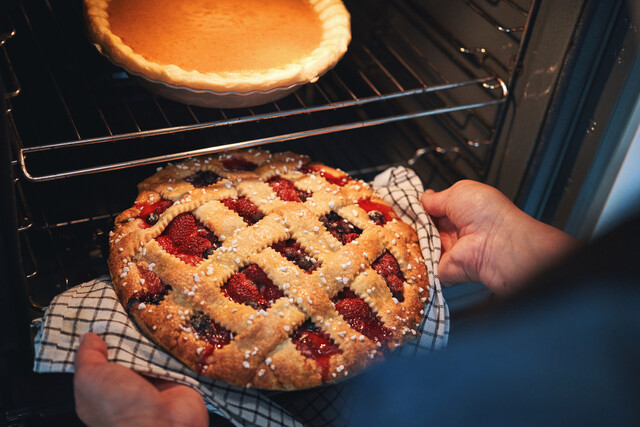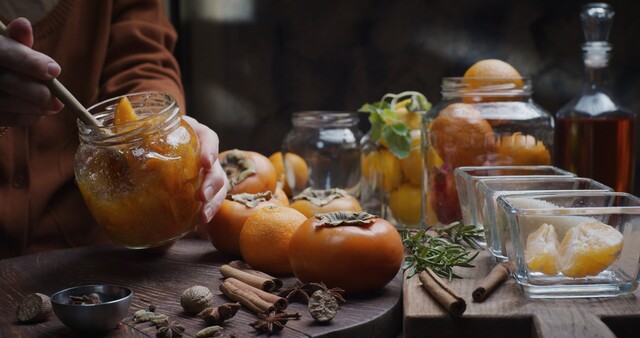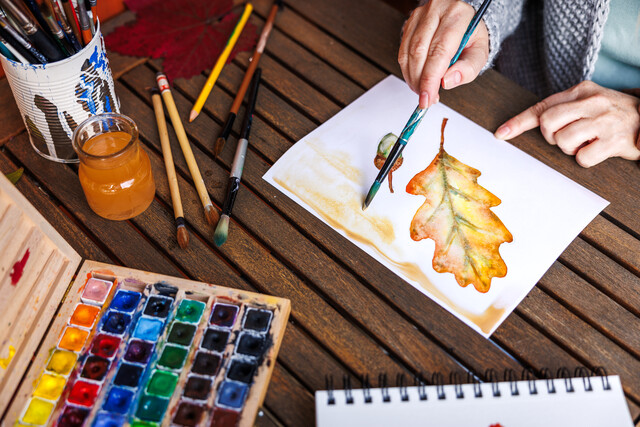Acrylic Painting
Unleash Your Inner Artist with Vivid Strokes

14 Hours average completion time
1.4 CEUs
16 Lessons
38 Exams & Assignments
1482 Discussions
15 Videos
18 Reference Files
128 Articles
Mobile Friendly
Last Updated November 2025
Art is not just a skill; it's a journey of self-expression, discovery, and growth. Imagine holding a brush in your hand, feeling a rush of inspiration, and knowing you have the confidence and the tools to bring your vision to life. Imagine losing yourself in a world of color and creation, where mistakes are not setbacks, but stepping stones to something extraordinary. This is the world of acrylic painting, and this is what Acrylics Unleashed offers you--a complete artistic experience that goes beyond just teaching techniques.
This course is designed to do more than instruct; it aims to inspire, to challenge, and to open your eyes to the infinite possibilities that acrylics offer. Whether you're picking up a brush for the first time or have years of experience under your belt, this course is your invitation to a creative transformation.
Why Acrylics? Why Now?
Acrylics are unlike any other medium--they are versatile, forgiving, and vibrant. This course shows you how to make acrylics your artistic playground. You'll discover how to manipulate them with confidence, using their fast-drying nature to create layers, textures, and stunning details. Make mistakes? No worries! Acrylics allow you to paint right over them, encouraging bold moves and experimentation. And with the right techniques, you'll learn to extend their drying time, blend seamlessly, and master even the most challenging styles.
But what really sets acrylics apart is their adaptability. You won't just be limited to traditional canvases or predictable strokes. You'll explore painting on wood, fabric, glass, and more. You'll learn to use unexpected everyday items--sponges, plastic wrap, even bubble wrap--to create mesmerizing effects. In every lesson, we dive deeper, pushing boundaries and unleashing new levels of creativity.
Why This Course?
What makes Acrylics Unleashed truly unique is not just the breadth of techniques covered, but the depth of experience offered. You'll be guided through every step with warmth and encouragement, gaining not just skills, but a deeper connection to your own creative instincts. From mastering the fundamentals to exploring advanced techniques, each lesson is designed to help you build confidence while expressing yourself authentically.
We believe that painting is a personal journey, and this course is crafted to fit you wherever you are on that path. It's not just about following instructions; it's about finding your artistic voice and letting it shine. Each module immerses you in the process, making learning feel less like a class and more like an awakening of creativity.
The Path to Transformation
By the end of this course, you won't just have paintings to show for it; you'll have a new sense of what you're capable of. You'll approach every blank canvas with excitement, knowing you have the ability to turn ideas into something extraordinary. You'll see your artistic journey not as a destination, but as an ongoing adventure where every painting is a new story waiting to unfold.
This isn't just another art class. Acrylics Unleashed is an invitation to immerse yourself in a world of color, creativity, and endless possibilities. It's about building the courage to experiment, the freedom to make mistakes, and the joy of discovering your unique artistic identity.
If you're ready to break free from limitations, to experiment, to explore, and to truly unleash your creativity, then let's get started. Dive into Acrylics Unleashed, and begin painting your most inspired journey yet.
- Mastery of diverse painting techniques
- Creating texture and depth in artwork
- Crafting cohesive and compelling compositions
- Storytelling through visual art
- Emotional expression and mood depiction
- Exploring mixed media and unconventional materials
- Developing observational skills and detail orientation
- Proficiency with various art tools
- Creative expression and experimentation
- Portfolio building and artwork presentation
- Understanding color dynamics and blending
-

Pie Baking 101
-

Nutrition 101
-

How to Draw 101
-

How to Bake Cookies
-

Mystery Writing
-

Soap Making Mastery
-

How to Knit
-

Western Calligraphy
-

Business Coaching
-

Adobe Edge Animate
-

Cooking and Baking 101
-

Sewing
-

Photography 101: Beginner to Intermediate
-

Christianity 101: An Introduction
-

Mixed Media Art
-

How to Can, Freeze, Dry and Preserve Food
-

Leadership Skills for Managers
-

Watercolor Painting
-

Landscaping 101
-

Marine Biology 101
-

Mindfulness in the Workplace
-

Cooking Class Bundle: 5 Cooking Courses
-

Habits of Millionaires
-

Digital Photography 101
-

Etiquette Consultant
